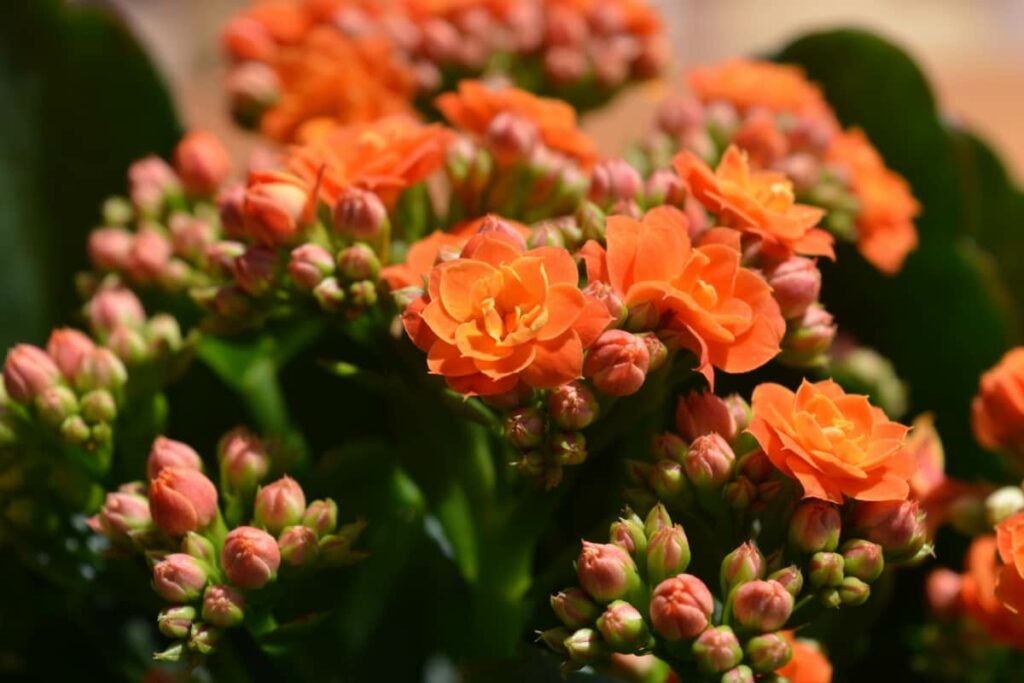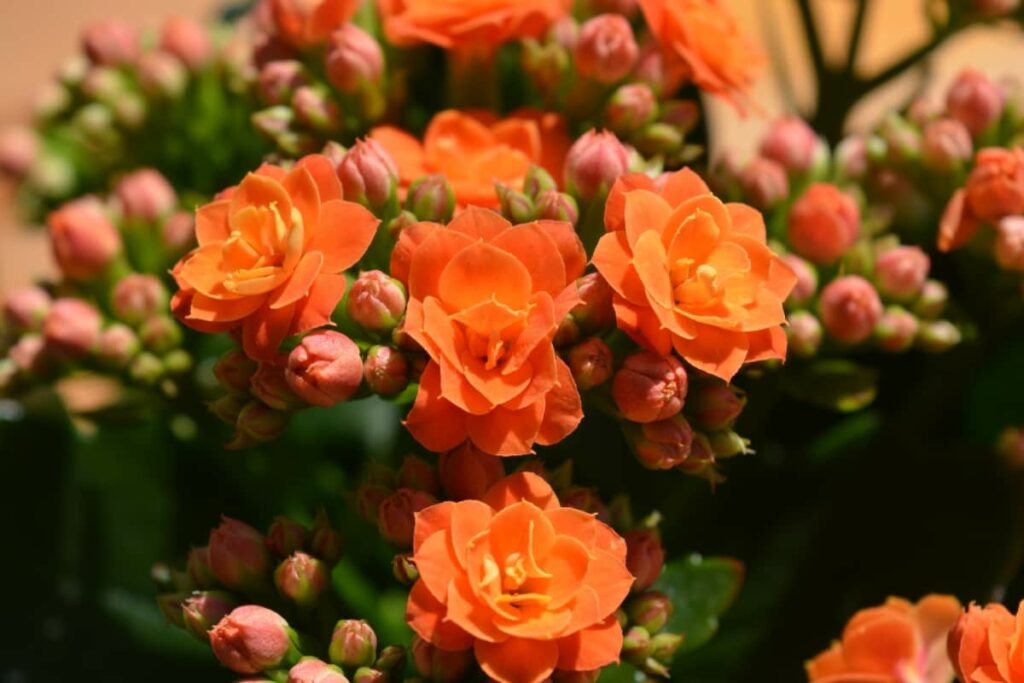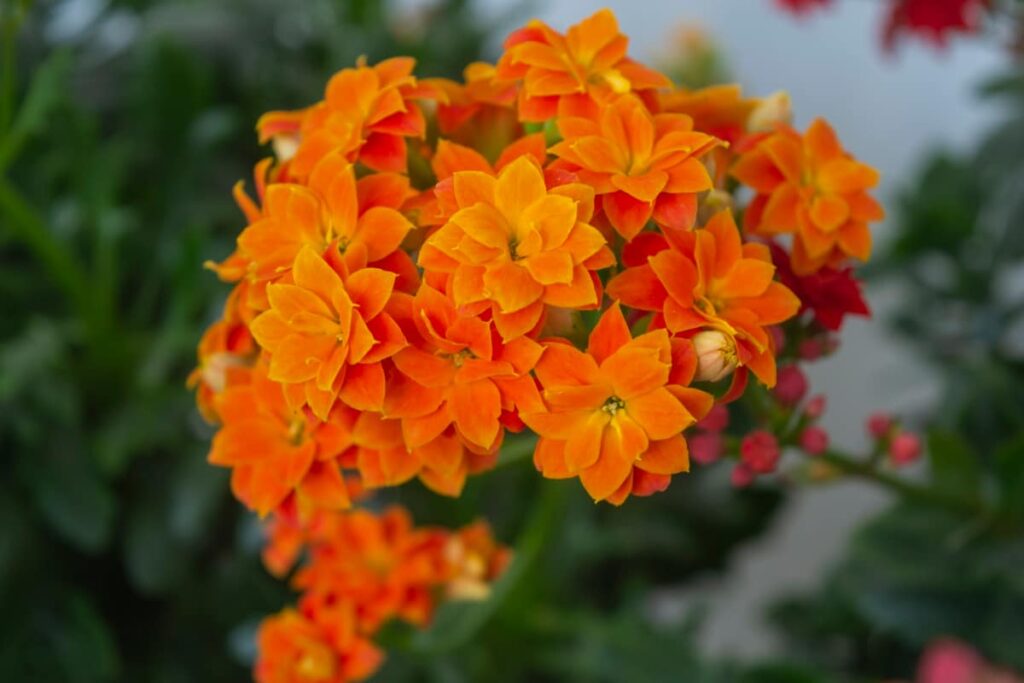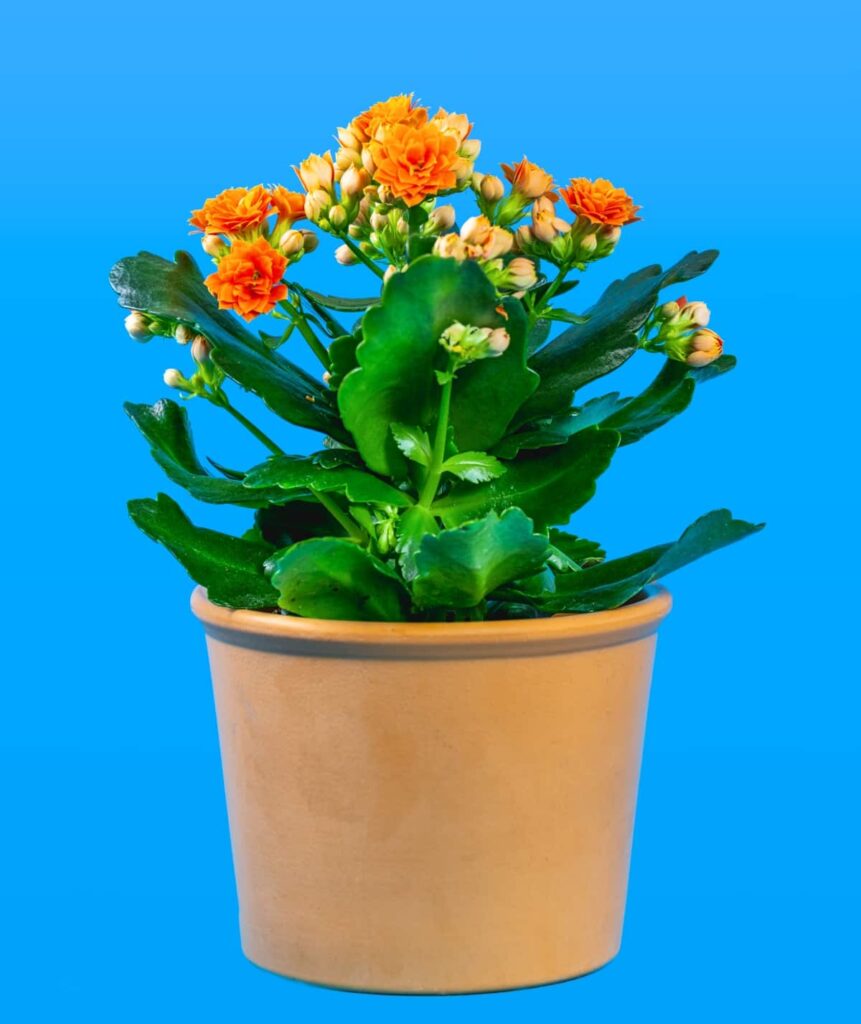Flaming Katy, known for its vibrant blooms and easy care, is a perfect addition to garden beds and indoor spaces. With its rich colors and succulent leaves, this plant offers a stunning display while being low maintenance. Growing Flaming Katy indoors has become increasingly popular, thanks to its adaptability and the bright cheer it brings to living spaces.

With the right flaming Katy care tips, including proper sunlight, watering, and fertilization, you can enjoy the spectacular blooms of Kalanchoe blossfeldiana. Whether propagating Flaming Katy cuttings or nurturing established plants, understanding their basic needs is key to a thriving display.
Growing Flaming Katy Kalanchoe
Understanding Flaming Katy’s Basic Needs
Light Requirements
Flaming Katy thrives under bright, indirect light, making it ideal for well-lit indoor or semi-shady garden spots. The plant requires precise lighting conditions: excessive direct sunlight can damage the leaves, while insufficient sunlight can impede its flowering process. Ensuring Flaming Katy receives the right light is crucial for encouraging blooms and maintaining vibrant foliage.
Ideal Temperature and Humidity Conditions
Flaming Katy’s temperature tolerance ranges between 60-85°F (15-29°C), with minimal fluctuations, making it well-suited for indoor environments. Humidity preferences are moderate, avoiding overly dry or damp conditions to prevent issues like leaf drop or disease. Maintaining these conditions will support your Flaming Katy’s health and flowering potential.
Propagation Techniques
Propagating from Leaf Cuttings
Propagating Flaming Katy from leaf cuttings is a simple yet effective way to multiply your plants. Select healthy leaves, allow them to callous over for a day or two, and then place them on moist soil. With proper care, these cuttings will root and grow into new plants, offering a rewarding propagation method.
Propagating from Stem Cuttings
Stem cuttings represent a widely used technique for Flaming Katy propagation. Cut a healthy stem, let it dry slightly to form a callus, and plant it in well-draining soil. This method is particularly effective for creating fuller, bushier plants, as each stem cutting has the potential to develop into a robust new Flaming Katy.
Seeds: When and How to Sow
Though less common, Kalanchoe blossfeldiana can be grown from seeds. Sow seeds in a well-draining mix, providing warmth and light to encourage germination. While seed propagation requires patience, it can be rewarding to grow Flaming Katy, especially for rare or unique varieties.
Soil and Planting Requirements
Choosing the Right Soil Mix
The best soil for Flaming Katy is a well-draining mix, often a blend of potting soil and perlite or sand, to prevent waterlogging and root rot. This succulent prefers a slightly acidic to neutral pH, ensuring nutrients are readily available for optimal growth.
Selecting Containers and Planting
When planting Flaming Katy, choose containers with adequate drainage holes to prevent excess water accumulation. The container size should accommodate the plant’s root system, allowing for growth without being overly spacious, which could retain unnecessary moisture and lead to root issues.
In case you missed it: Best Fertilizer That Makes Flowers Bloom: Organic and Synthetic Solutions

Watering and Feeding
Watering Schedule and Techniques
Flaming Katy watering schedule should lean towards under-watering rather than over-watering, allowing the soil to dry out between waterings. This succulent stores water in its leaves, making it drought-tolerant and sensitive to overwatering, which can cause root rot and leaf drop.
Fertilization Needs and Recommendations
Fertilize the Flaming Katy plant sparingly with a balanced, water-soluble fertilizer diluted to half its strength every 4-6 weeks throughout its growing season. Over-fertilization can harm the plant, leading to poor bloom production and weak growth, so following a conservative Flaming Katy fertilization guide is essential.
Pruning and Maintenance
How and When to Prune Flaming Katy
Pruning Flaming Katy helps maintain its shape and encourages more robust growth. After the bloom cycle, trim back spent flowers and leggy growth to promote new blooms and densify the plant. Regular pruning also aids in Flaming Katy pest control by removing potential infestations early.
Regular Maintenance Tips for Healthy Growth
Regular maintenance, including deadheading, checking for pests, and ensuring the plant has adequate light, is essential for Flaming Katy’s health. Adjusting care with the seasons, such as reducing water in winter, is part of an effective Flaming Katy seasonal care guide, ensuring your plant remains vibrant year-round.
Pest and Disease Management
Common Pests and How to Deal with Them
Flaming Katy can attract pests like aphids and mealybugs, which can be managed using non-toxic insecticidal soaps or neem oil applications. Early detection and treatment are crucial for Flaming Katy pest control, preventing infestations from harming the plant or spreading to others nearby.
Preventing and Managing Diseases
Preventing diseases in Flaming Katy involves ensuring proper ventilation, avoiding overwatering, and keeping the leaves dry during watering. Typical problems like root rot or fungal infections can usually be managed by modifying care routines, like enhancing soil drainage or minimizing plant humidity.
Flowering and Encouraging Blooms
Understanding Flaming Katy’s Flowering Cycle
The Flaming Katy bloom cycle is influenced by daylight hours, with shorter days triggering the flowering process. Understanding this natural cycle is key to managing bloom times, typically seeing Flaming Katy showcase its vibrant colors in late fall to early spring. This cycle aligns with its native habitat conditions and can be replicated indoors by controlling light exposure.
Tips to Encourage Abundant and Vibrant Blooms
Encouraging blooms in Flaming Katy involves mimicking its natural light conditions, ensuring it receives bright, indirect light with periods of darkness. Proper fertilization, particularly phosphorus-rich feeds, can support bud formation. Additionally, maintaining the ideal temperature range and avoiding over-watering during its blooming phase is crucial for vibrant and abundant flowers.
Seasonal Care Guide
Spring and Summer Care
During spring and summer, Flaming Katy’s care shifts towards promoting growth and preparing for the blooming season. This period involves frequent watering, regular feeding, and ensuring the plant receives ample light without direct exposure to harsh midday sun. Repotting Flaming Katy plants can also be done in spring to accommodate growth.
Fall and Winter Care
Flaming Katy winter care requires reducing watering frequency and ceasing fertilization to mimic its natural dormant period. Keeping the plant in cooler temperatures and limiting light exposure can help initiate the bloom cycle. This seasonal adjustment is crucial for the plant’s health and bloom vitality.
In case you missed it: Unlocking the Secrets to Flower Development Failure: Essential Causes Explored

Troubleshooting Common Problems
Leaves Dropping or Yellowing
Solving the issue of Flaming Katy leaf drop typically entails managing water levels to avoid both over and under-watering, while also protecting the plant from abrupt temperature fluctuations. Yellowing leaves can indicate nutrient imbalances or poor soil conditions, requiring soil and feeding adjustments.
Failure to Bloom
Failure to bloom in Flaming Katy can result from inadequate light conditions or insufficient darkness during its bloom-triggering phase. Ensuring the plant experiences shorter daylight hours in the fall can help stimulate blooming alongside proper care and feeding.
Overcoming Root Rot
Root rot in Flaming Katy is primarily caused by overwatering and poor drainage. Overcoming this issue involves letting the soil dry out more between waterings, improving soil aeration, and, in severe cases, repotting the plant into fresh, well-draining soil to prevent further damage.
In case you missed it: How to Increase Flowering in Jasmine: Blooming Secrets to Boost Flowering in Jasmine

Conclusion
Flaming Katy offers a vibrant splash of color and life to any space, indoors or out, with its bright blooms and succulent leaves. It can lead to a healthy, flourishing plant by understanding and catering to its basic needs, from lighting and watering to seasonal care adjustments. Addressing common problems with informed troubleshooting further ensures the vitality of Flaming Katy, making it a rewarding addition for any plant enthusiast.
- Profitable Village Farming Business Ideas in 2024
- High-Yield Aquaculture: Fast-Growing Fish for Farming
- Effective Fish Pond Construction Techniques for Beginners
- Irrigation and Water Management in Pineapple Farming
- Blossom to Harvest: Mastering Flowering and Pollination in Papaya Farming
- Pig Fattening Essentials: From Selection to Sale for Beginners
- Raising Wagyu Cattle: A Complete Guide for Premium Beef Production
- Soil Types and Their Water Holding Capacity
- Optimizing Irrigation Schedules for Coconut Groves for Enhanced Yield
